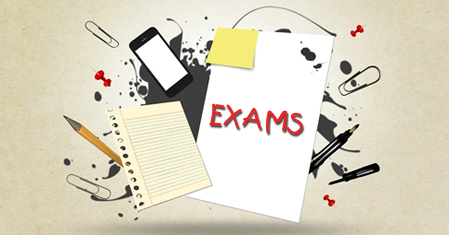Different Revision Techniques
 The quality of revision you do for your exams could make the difference between a good or bad grade. It's not enough just to read randomly through your text books. You need to approach revision in the most effective way. There are a number of different techniques for revision, and no single one is right all the time. Different techniques might suit different students, but it might also depend on the subject. What works for a science subject, for instance, might not work so well for a language. Here are some of the main techniques that can be used for revision.
The quality of revision you do for your exams could make the difference between a good or bad grade. It's not enough just to read randomly through your text books. You need to approach revision in the most effective way. There are a number of different techniques for revision, and no single one is right all the time. Different techniques might suit different students, but it might also depend on the subject. What works for a science subject, for instance, might not work so well for a language. Here are some of the main techniques that can be used for revision.
Using Flashcards
Flashcards can be extremely effective, because they force you to summarise a piece of knowledge in simple terms. There are apps you can use to create your flashcards, but there's something to be said for actual old-fashioned, physical cards. The big advantage here is that writing out the information helps you remember it more accurately.
Using Mind-Maps
Mind-maps work particularly well if you prefer to take information in visually. At the start of the session, draw a diagram connecting the various concepts in the topic you're revising and the relationships between them. They can help identify your strengths and weaknesses, and you may find you remember more than you thought.
Using the Pomodoro Technique
The Pomodoro Technique is based on the idea that short revision sessions, followed by brief rests, allow you to absorb the information you're learning before you move on. Typically, the ideal timescale is 25 minutes revising, then five minutes rest. This can also be used to schedule different subjects for consecutive sessions, since varied information tends to form more neural connections than closely related topics.
Using YouTube Tutorials Your phone or computer gives you a valuable resource not available to past generations — YouTube tutorials. These are invaluable to students who learn best visually or aurally, but it's important to ensure you're watching the right videos. There are tutorial videos that are completely up to date on your subject, but others may be out of date. And your favourite band is probably there, too, so you need to be disciplined.
Using Past Papers
Past papers will be available from your examination board, along with the mark scheme they used. When you've revised a topic, find a relevant question and answer it, then mark it yourself. You could also ask your teacher or tutor to look at your answer. Bear in mind that this process should be integrated into the process, not left till the end.
Teaching Someone Else
Research suggests that giving someone else a lesson in a topic is one of the most effective ways of learning. One approach is to form a partnership with another student, or with a small group, and take turns being the teacher and the pupil.
How to Choose Your Revision Techniques
As mentioned at the beginning, no single one of these revision techniques is inevitably going to be the best. Think about when you've learnt easily before, whether in a class or in private study. Write these down and identify what it was that made the sessions so effective. That doesn't mean, of course, that you should only ever use one technique. Approaches like flashcards, mind-maps and YouTube tutorials belong to a different phase than doing past papers or teaching, while the Pomodoro Technique can be used in conjunction with all these. If you register with TutorExtra, you can find more advice on the most effective ways to revise.


